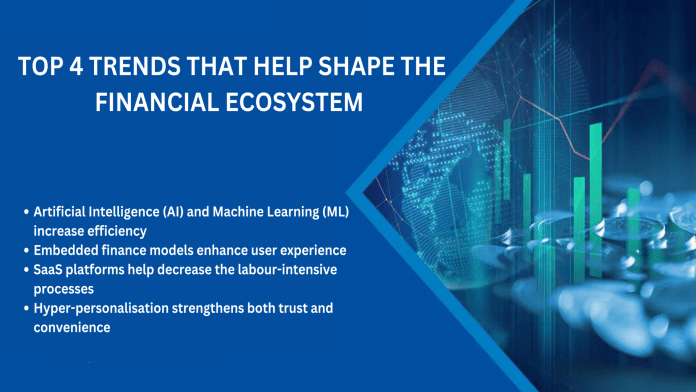The growth of the fintech sector in India has been monumental, with its global market size expected to reach up to $449.1 billion by 2028. With the financial sector being impacted by technologies such as cloud computing, machine learning and artificial intelligence, India is emerging as one of the top global leaders in this landscape. In fact, India has the third largest fintech ecosystem in the world, with the highest adoption rate of 87%.
That said, the domestic fintech sector is poised to generate revenue of up to $200 billion by 2030. These whopping figures clearly show the upward growth trajectory of the industry, and famous fintech industry leaders believe the integration of technology has paved the way for the sector to leverage new growth opportunities.
Among the top corporate leaders in India who believe that adopting technology is pivotal to financial inclusion is Sanjiv Bajaj, Chairman and Managing Director of Bajaj Finserv. “We are seeing a significant adoption across different aspects of the digital world, even in financial services (which is a heavily regulated sector) … Institutions, especially incumbents, will need to adopt digital as a way of life. The last year and a half have dramatically increased adoption across various customer segments. That is why the requirement for very solid, stable and scalable cloud infrastructure becomes a prerequisite. The role of technology in pushing financial services in rural regions among the younger population is paving the way for financial inclusion,” remarks one of the top fintech leaders in India.
With fintech striving to create limitless possibilities, here is a brief overview of a few top trends helping the sector stay ahead of the curve.
- Artificial Intelligence (AI) and Machine Learning (ML) increase efficiency
India’s increasing demand for credit as well as a large underserved and new-to-credit population, require something AI and ML can deliver flawlessly – an automated underwriting process that makes risk and limit assessment cheaper and more efficient. Unlike traditional models that require a credit history to predict risk, these new technologies can use structured and unstructured consumer data to improve lending practices.
What’s more, both AI and ML offer innovative solutions to spotting fraud and improving security for the fintech industry as a whole. They are also being leveraged to anticipate the new market, pricing and customer behaviour trends, helping financial companies cater to customers better. Finally, AI-enabled chatbots and voice assistants help support customers, allowing human resources to attend to more nuanced queries.
- Embedded finance models enhance user experience
Offering customers a one-stop destination for an integrated experience related to digital payments, insurance, investments and credit, embedded finance is redefining fintech. With bundled products and services, consumers experience convenience, lower costs, and more choices.
As per the India Embedded Finance Market Report 2022, its market size is set to reach $21,127.5 million by 2029, which shows this innovative trend is at the cusp of growing into a behemoth. With BNPL being hailed as its most flourishing model, other innovations in deposits and credit are on the horizon.
- SaaS platforms help decrease the labour-intensive processes
With SaaS, fintech companies are able to offer services without the expenditure and security risks related to creating or expanding their own hardware infrastructure. From eliminating fraud and catering to consumers better to data mining and storage, SaaS solutions offer new entrants to the industry the chance to scale up and deliver seamlessly.
Such cloud computing collaboration empowers fintech to be more agile, proactively reach new demand and become future-proof with performance-based solutions. By lowering administrative effort and cost, offering speedy upgrades to the software and augmenting cyber security, SaaS directly impacts competitiveness and customer adoption for the sector.
- Hyper-personalisation strengthens both trust and convenience
From diversified financial services, the focus of fintech has shifted to customised products that suit consumers to a T. Both new entrants and veterans in the sector realise that personalisation
unlocks the key to India’s Gen Z population. Using predictive AI and ML models that churn out insights from layered data, hyper-personalisation is seeping into all facets of finance, from wealth generation to borrowing.
A tailored suite of products also enhances trust and transparency in a world where increasing choices overwhelm the new breed of consumers. With predictive recommendations, this trend uses past purchases, clicks, reviews and other facets of behaviour to offer a solution to the consumer at the right time. It is no wonder that hyper-personalisation forms an important aspect of the overall consumer experience of many companies like Bajaj Finance.
With fintech continuing to be a driving force, India can maintain its status quo on global leadership in 2023 and the years ahead. AI and Internet of Things (IoT) inclusions in financial services can help change the industry paradigm. With many famous corporate leaders leveraging these latest technologies, upping the game is the only way to stay ahead of the curve.
